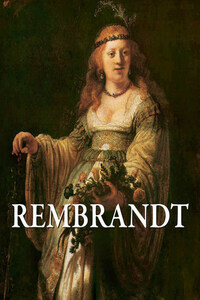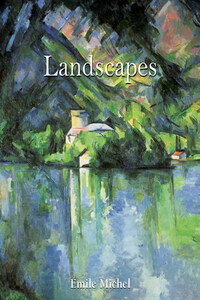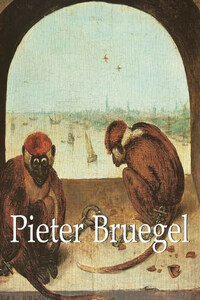Rembrandt was born on 15 July 1606 in Leyden. The year 1606, although very probably the year of his birth, is not absolutely above suspicion as little record of his early youth has been passed on to us. Rembrandt was fifth among the six children of the miller Harmen Gerritsz, born in 1568 or 1569, and married on 8 October 1589, to Neeltge Willemsdochter, the daughter of a Leyden baker, who had migrated from Zuitbroeck. Both were members of the lower middle class and in comfortable circumstances. Harmen had gained the respect of his fellow citizens, and in 1605 he was appointed head of a section in the Pelican quarter. He seems to have acquitted himself honourably in this office, for in 1620 he was re-elected. He was a man of education, to judge by the firmness of his handwriting as displayed in his signature. He, and his eldest son after him, signed themselves van Ryn (of the Rhine), and following their example, Rembrandt added this designation to his monogram on many of his youthful works. In final proof of the family prosperity, we may mention their ownership of a burial-place in the Church of St Peter, near the pulpit.
Heavily influenced by his mother’s religion, Rembrandt sought subjects for his works mainly in the sacred writings. Calligraphy in those days was, with the elements of grammar, looked upon as a very important branch of education. Rembrandt learnt to write his own language fairly correctly, as we learn from the few letters by him still existing. Their orthography is not faultier than that of many of his most distinguished contemporaries. His handwriting is very legible, and even has certain elegance; and the clearness of some of his signatures does credit to his childhood lessons. With a view, however, to his further advancement, Rembrandt’s parents had enrolled him among the students of Latin literature at the University. The boy proved but an indifferent scholar. He seems to have had little taste for reading, to judge by the small number of books to be found in the inventory of his effects in later life.
Great as was his delight in painting, pleasures even more congenial were found in the countryside surrounding Leyden, and Rembrandt was never at a loss in hours of relaxation. Though of a tender and affectionate disposition, he was always somewhat unsociable, preferring to observe from a distance, and to live apart, after a fashion of his own. That love of the country which increased with years manifested itself early with him. Rembrandt’s parents, recognising his disinclination for letters and his pronounced aptitude for painting, decided to remove him from the Latin school. Renouncing the career they had themselves marked out for him, they consented to his own choice of vocation when he was about fifteen years old. His rapid progress in his new course was soon to gratify the ambitions of his family more abundantly than they had ever hoped.
The Stoning of Saint Stephen, 1625.
Oil on wood, 89.5 × 123.6 cm.
Musée des beaux-arts, Lyon.
Leyden offered few facilities to the art student at that period. Painting, after a brief spell of splendour and activity, had given place to science and letters. A first attempt to found a Guild of St Luke there in 1610 had proved abortive, though Leyden’s neighbours, the Hague, Delft, and Haarlem, reckoned many masters of distinction among the members of their respective companies. Rembrandt’s parents, however, considered him too young to leave them, and decided that his apprenticeship should be passed in his native place. An intimacy of long standing, and perhaps some tie of kinship, determined their choice of master. They fixed upon an artist, Jacob van Swanenburch, now almost forgotten, but greatly esteemed by his contemporaries.
Though Rembrandt could learn little beyond the first principles of his art from such a teacher, he was treated by Swanenburch with a kindness not always met with by such youthful probationers. The conditions of apprenticeship were often very rigorous; the contracts signed by pupils entailed absolute servitude, and exposed them in some hands to treatment which the less long-suffering among them evaded by flight. But Swanenburch belonged by birth to the aristocracy of his native city. During Rembrandt’s three years in his trust, his progress was such that all fellow citizens interested in his future “were amazed, and foresaw the glorious career that awaited him”.
His noviciate over, Rembrandt had nothing further to learn from Swanenburch, and he was now of an age to move out of his father’s house. His parents agreed that he should leave them, and perfect himself in a more important art-centre. They chose Amsterdam, and a master in Pieter Lastman, a very well-known painter of the time. In his studio, methods of instruction much akin to those adopted by Swanenburch were in vogue, though the personal talent modifying them was of a far higher order. Lastman was, in fact, a member of the same band of Italianates who had gravitated round Elsheimer in Rome.











